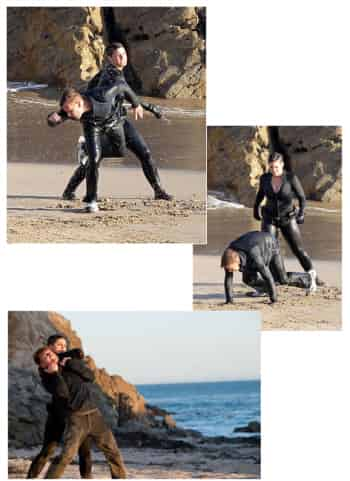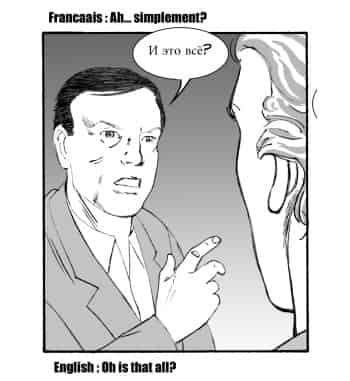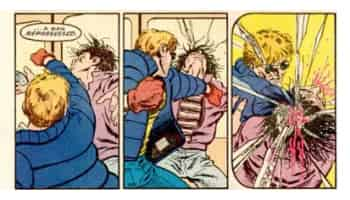Bonus
-
Writing tips
Several blogs offer tips to help beginning writers develop their skills. Here are a few that caught our attention:
John Ostrander’s theory: “It’s what I call the ‘iceberg theory.’ The bulk of an iceberg is underwater. That bulk is necessary for the part of the iceberg that shows. In the same way, you need to know a lot about the characters, the setting, the story but only a certain percentage of it needs to show. So you select which details help make the story real and convincing to the reader. Those are the telling details” (“Details, Details, Details,” www.comicmix.com, July 15, 2012).
While Emily S. Whitten didn’t set out to give writing tips in her post, she still offers good advice: “Civil War is one of my favorite comic book crossovers for several reasons. One is that this is a crossover in which every character has a legitimate reason to be involved” (“Marvel Civil War – Prose vs. Graphic Novel,” www.comicmix.com, July 17, 2012).
Because writing a comic also involves drawing, Daniel Champion gives the following tips: 1) Have an eye to finding the weaknesses in others’ writing and try to understand why it doesn’t work. 2) Understand how two or three panels “talk to each other” (“Drawing for Comics,” www.comicbookdaily.com, July 10, 2012).
Terrassa Iezzi suggests forgetting about the average reader, which will only lead to a pre-digested product (“Why You Love ‘The Wire,’ Explained in Fascinating Detail,” www.fastcompany.com,). We might add that each author should be his or her own primary reader. You should ask yourself what you like to read. If you can’t find your own work interesting, it will be difficult to get other’s attention.
And lastly, in another column, Daniel Champion gives these additional tips: 1) Write the end in minute detail before starting to write your story. 2) Be unpredictable. And, especially, 3) Watch Lost and understand it! (“Writing for Comics”—“Across the Pond” www.comicbookdaily.com, July 18, 2012).
-
References in “Dead Man”
-
But what were they saying? (Fighting on Two Fronts)
-
Which tone to use?
Corey Schroeder reminds us that “Fast-forward to the 90s and you’ve got a new kind of Batman. Watchmen and The Dark Knight Returns have reinvented superheroes as real people with real flaws in the midst of stories that treat the audience’s intellect with maturity” (“Are Superhero Comics Too Serious,” www.comicvine.com, September 14, 2011). Chris Sims goes even further: “The imitators learned the wrong lessons, and instead of creating stories that treated their subject matter with intelligence and craft, which is a difficult matter requiring a great deal of skill, the knock-offs tried to recapture the things that were easy, like cussin’ and violence. They were exactly the same kind of escapist power fantasy that they were pretending to rise above, just wrapped up in cheap, meaningless exploitation and sold to the audience as something that wasn’t for little kids — which in itself is the most immature, teenage motivation something can possibly have” (“What’s Up with the 90s?” www.comicsalliance.com, July 27, 2012).
This may explain why some people wonder if superhero stories have become too violent (“Sex & Violence,” www.comicbookdaily.com, December 9, 2011). In our opinion, violence isn’t the real problem. In the 90s, Frank Miller’s Daredevil stories included some very graphic representations of violence. But they fit the mood. Our main reproach would be the lack of perspective about that violence. If we take the TV series 24, Jack Bauer tortured criminals but we don’t recall any innocent characters being tortured. We feel more uneasy about that situation than about the torture itself.
-
References in “The Nightmare”
“The Nightmare” mentions a terrorist group called CLODO (Committee Liquidating or Diverting Computers). This group actually existed. A few computer terrorism actions were attributed to them in the early 80s. At that time, the attacks were on the physical installations of computer manufacturers, not on data.





